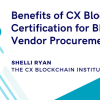The Top 10 Actions Chief Procurement Officers Must Take in 2021
According to The Hackett Group’s 2021 Procurement Key Issues Study, the 2020 crisis continues to shape the 2021 procurement agenda. Unprecedented business disruption forced procurement organizations to refocus on supporting critical business operations and harnessing the value from supplier relationships, resulting in a pivot toward supply assurance and spend cost control.
In 2021, spend cost reduction remains the top priority for the procurement agenda and procurement must provide stability to the enterprise through spend cost control and supply assurance.
Respondents to the 2021 Key Issues Study expect stability in the business environment to remain elusive: 41% said they believe conditions will stabilize by the second half of 2021, while 36% predict it will take longer. It’s clear that the crisis and its fallout will continue to shape procurement priorities in 2021 and beyond.
How to Take Action
The year ahead will bring the most dramatic shift in procurement priorities since the inception of The Hackett Group’s annual Key Issues Study, prompting a push for transformation in the function. After going through an accelerated learning curve during the crisis, companies plan to capitalize on the lessons learned.
Regardless of procurement’s plans and priorities for the coming year, chief procurement officers (CPOs) will ultimately be judged on what they accomplished. When we look back a year from now, what must procurement have accomplished for the year to be considered a success?
Here is our perspective on the 10 most critical actions and accomplishments for procurement:
1. Increase stability.
Even companies that fared better during the pandemic must still brace for ongoing instability for some time. Procurement must continue to focus on its core mission of spend cost reduction, leveraging digital tools and business partnerships to maximize savings.
For example, relationships and analysis can elevate the strategic sourcing process, and leveraging new data sources can widen the market intelligence available to sourcing teams. Procurement must support enterprise stability by creating awareness and monitoring emerging supply risk to ensure continuity of core business operations with supply assurance and spend cost control.
2. Reduce third-party risk.
Supply assurance became top of mind at the board level during 2020. As a result, procurement is tasked with further strengthening third-party risk management. This means monitoring risk across a broader set of risk exposures by going deeper in the supplier chain at earlier stages of the supplier lifecycle – during the beginning of the sourcing process – and continuing to monitor and mitigate risks using real-time data and insights throughout the full supplier life cycle.
CPOs must therefore enhance third-party risk management capabilities. Key to this will be embedding risk management across the sourcing and supply management processes to update and align risk monitoring to the corporate risk framework. CPOs must also adopt enabling technology and data to support this heightened approach to continuous risk monitoring throughout the supplier life cycle.
3. Elevate the role and focus on relationships.
To elevate and upgrade the strategic role of procurement as a business partner, it requires procurement to communicate the value it can deliver by developing and maintaining strong business relationships and acting as a business enabling function. Organizations acting as trusted business advisors adopt more agile ways of working, focus on consistent service delivery, bring a deep knowledge of both the business and supply market to support collaborative and proactive interactions with stakeholders, and above all focus on enabling business success. Strategic procurement leaders who ensure they remain aligned to key stakeholders and business delivery points will maximize the opportunity from a strong procurement business partnership.
4. Modernize procurement application platforms.
Technology to support the procurement function is critical for identifying value generation opportunities, delivering efficient processes, customer-centric workflows and user-friendly interfaces. Teams must accelerate the migration to cloud-based platforms and applications, especially to effectively deliver new services in supply risk and performance. Making the shift from legacy technology platforms will be critical, but to achieve transformational change, these projects must be treated as broader business change projects that have an impact on roles, responsibilities and skills, rather than only involving technology transformation.
5. Accelerate digital transformation.
Employ smart automation and analytics, and other emerging technologies to eliminate data blind spots, dependency on manual tasks and improve efficiency. The crisis pushed procurement beyond its traditional hesitancy to adopt new tools. In the future, success will depend, in large part, on broader implementation and adoption of modern enabling tools, including newer capabilities such as artificial intelligence (AI) and smart automation. While procurement teams have been experimenting with these technologies, it must now scale up to apply these technologies to more novel use cases to expand adoption throughout the function.
6. Close skill gaps.
Eliminate talent gaps within stakeholder relationship, business acumen, change leadership, strategic thinking, data savviness and customer-centric design competencies. Procurement will need to update and develop both soft and technical skills. Organizations also need to consider how organizational models are changing, the impact of new services, and the general increase of virtual work. This means adapting teams to collaborate more globally, in agile and virtual ways, and to ensure employees have the tools they need to succeed in new environments.
7. Adopt a next-generation operating model.
Reinventing the procurement operating model is needed to improve performance, enhance delivery speed, remove bureaucracy, and address a lack of collaboration. The role of the CPO will change to become much more influential to deliver on both business and procurement priorities. Both procurement and enterprise resources will be called on to effectively deliver against priorities across the organization. Specialized, agile, high-impact resources can be delivered through centers of excellence and operations via shared service centers.
8. Improve agility.
Increased agility is critical for success. Successful procurement teams must be able to quickly respond to and even predict changes in the external marketplace, as well as changing business expectations. Enabling this flexibility requires changes to the operating model, ways of working and related processes. CPOs can improve agility in procurement through deploying flexible teams empowered to make rapid decisions on the basis of calculated risks, as well as other tactics including simplification, third-party staff augmentation, digital processes and streamlined governance.
9. Become data and insight driven.
Developing modern data-driven and analytical capabilities is a complex process. Setting up a strong master data management program is the first – and one of the most critical – steps. It will also be important to consider the information needed to answer key questions concerning business value and the supporting information architecture. Without easy and timely access to extensive, trustworthy data, little can be gleaned from its analysis. Procurement must also develop strong analytical skills and bring in new resources armed with modern digital analytical tools.
10. Increase influence.
Increasing spend influence is a constant focus of top-performing procurement organizations. Business partnership, customer-centricity and agile processes are all factors in spend influence, but none is more important than procurement’s ability to bring something new to the table. Procurement must first understand what the business is looking for and then organize around those needs – for example, negotiations expertise, sustainability or market intelligence – to deliver value. By developing capabilities that respond to business needs, it will enable the procurement function to influence more spend across the enterprise.
The year ahead will bring the most dramatic shift in enterprise priorities and transformation in recent memory. Procurement must support enterprise stabilization and recovery strategies by expanding its role as a strategic advisor that can quickly realign to changing market conditions and business priorities and add new sources of value to the business.









